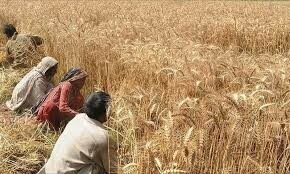LAHORE: The city saw a thick cloud of smog building up since a day, and considerably worsening on Monday. The day appeared overcast and dreary, without sunshine, while a layer of smoke and dust blurred visibility of the city skyline.
As a result the EPD announced the beginning of what is now being termed Lahore’s “fifth season” – smog.
An EPD spokesperson said the Punjab government had been unable to control smog last year despite directions by the Lahore High Court. Other cities were also in danger of facing smog.
EPD warned that citizens should not remain outdoor during smog unless necessary and if travelling then helmets or masks should be used. They advised using public transport and reduce the number of cars on roads. Washing up after staying outside is important as grime can be collected on the skin which may lead to irritation.
He also announced that crop stubble burning, open fires were banned and action would be taken against violators.
He advised that fog lights be used at night and early morning for better visibility.
He added that no kilns would be allowed to function except those working on the zigzag technology.
Lahore threatened by NOx
Lahore has been declared one of the world’s 50 NO2 (nitrogen dioxide) ‘hotspots’ with around 40 percent of road transportation and 23 percent of power generation as major sources, according to the European Space Agency. The Agency’s new satellite Sentinel 5P has provided unprecedented detail of global NO2 pollution. The satellite has just started producing data on NO2 in early July.
NO2 arises from human activities like fossil fuel burning and it impacts public health.
It is linked to an estimated 75,000 premature deaths per year (worldwide). It is also a major source for PM2.5 and Ozone (O3) which are very harmful air pollutants to human health.
50 worst air pollutant hotspots
Satellite data generated by European Space Agency’s new satellite and analyzed by Greenpeace reveals what the worst emissions sources are of NOx (oxides of nitrogen). Both nitric oxide (NO) and nitrogen dioxide (NO2) are key pollutants contributing to harmful air pollution levels around the world.
The list of the largest emissions hotspots includes several coal-fired power plants in India, South Africa and Germany, 10 power plant and industrial clusters in China, 14 megacities with very high transport-related emissions, including Santiago de Chile, Tehran, Dubai, London and Paris; as well as agricultural burning in Congo and Angola. Some hotspots, such as Seoul, Jakarta and New Delhi, have a mix of contributing sources, including transport, coal power plants and manufacturing. The data covers the period from June to August.
Power generation from coal and oil is the main source of emissions at the largest number of hotspots, 19 out of 50, followed by manufacturing industries (14), most notably steel plants in China, and transport (10).
The largest number of hotspots, a total of 10, is found in China, four in the EU and three in India, the U.S. and Congo.
NOx is a dangerous air pollutant, causing respiratory symptoms and damaging the lungs due to acute exposure, increasing the risk of chronic diseases in long-term exposure. Furthermore, NOx in the atmosphere leads to the formation of PM2.5 and ozone, the two pollutants causing the most severe public health damage worldwide.
In the light of this data it is increasingly important, that fossil fuels (coal power plants and transport) are seen as contributing factors of air pollution – an important piece of information especially with the start of the smog season not just in Pakistan but all over Asia.
Environmental lawyer, Ahmed Rafay Alam, says the data changes the entire scenario.
“Till now the general perception was about the meters and equipment of air quality and whether it was being measured correctly,” he says. “Now this data should make us wonder where NOx is being produced.”
He says along with the transportation, crop burning and fossil fuel burning were two huge sources.
But now it is about how Pakistan must re-examine its several policies, says Rafay.
“The pertinent question is that a debate should be started on what we can do to stop it? We need to rethink our energy policy, our transport policy – we need to think about reducing cars and improving public transport – about redesigning entire cities to accommodate better public health.”
Published in Dawn, October 30th , 2018















































Dear visitor, the comments section is undergoing an overhaul and will return soon.